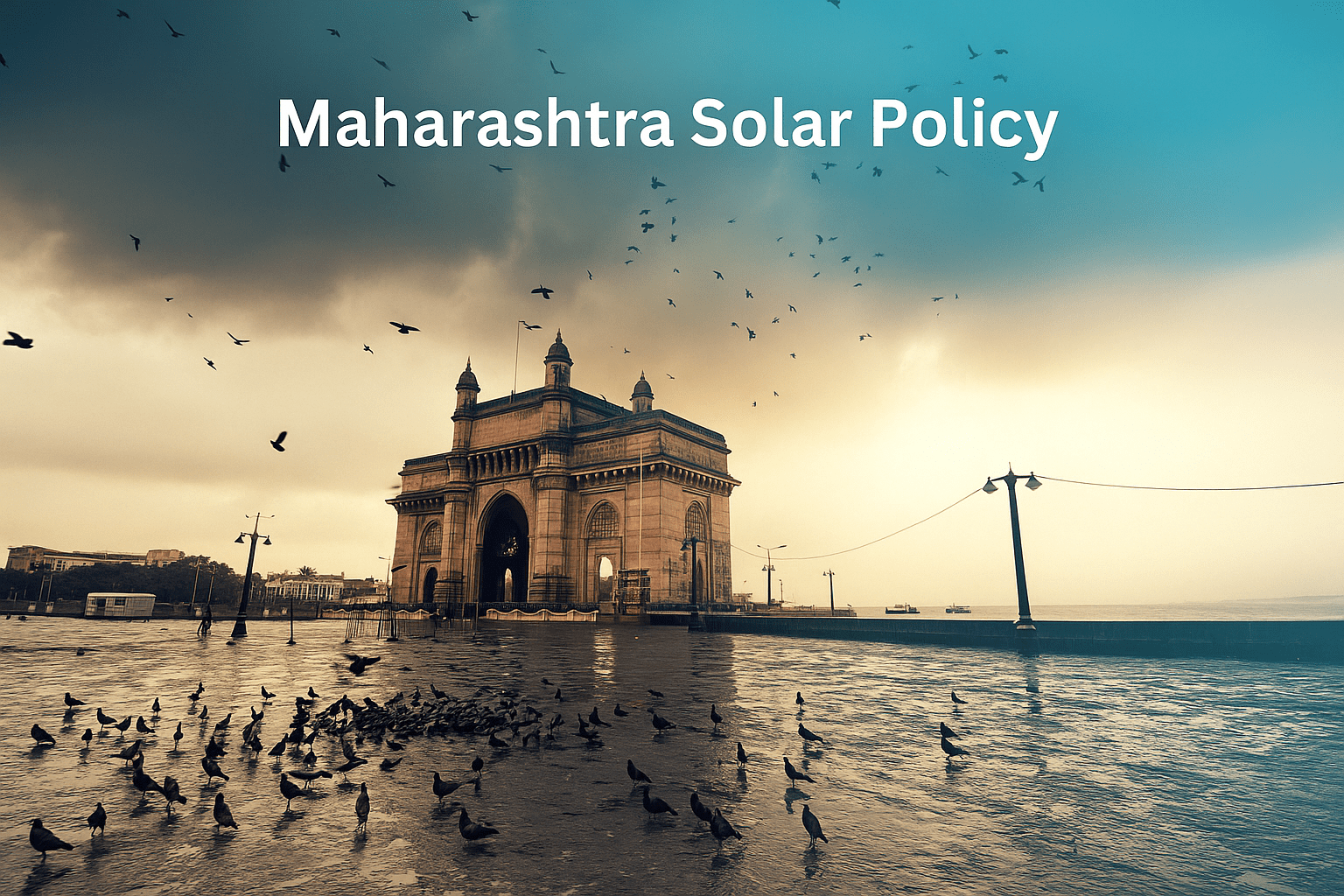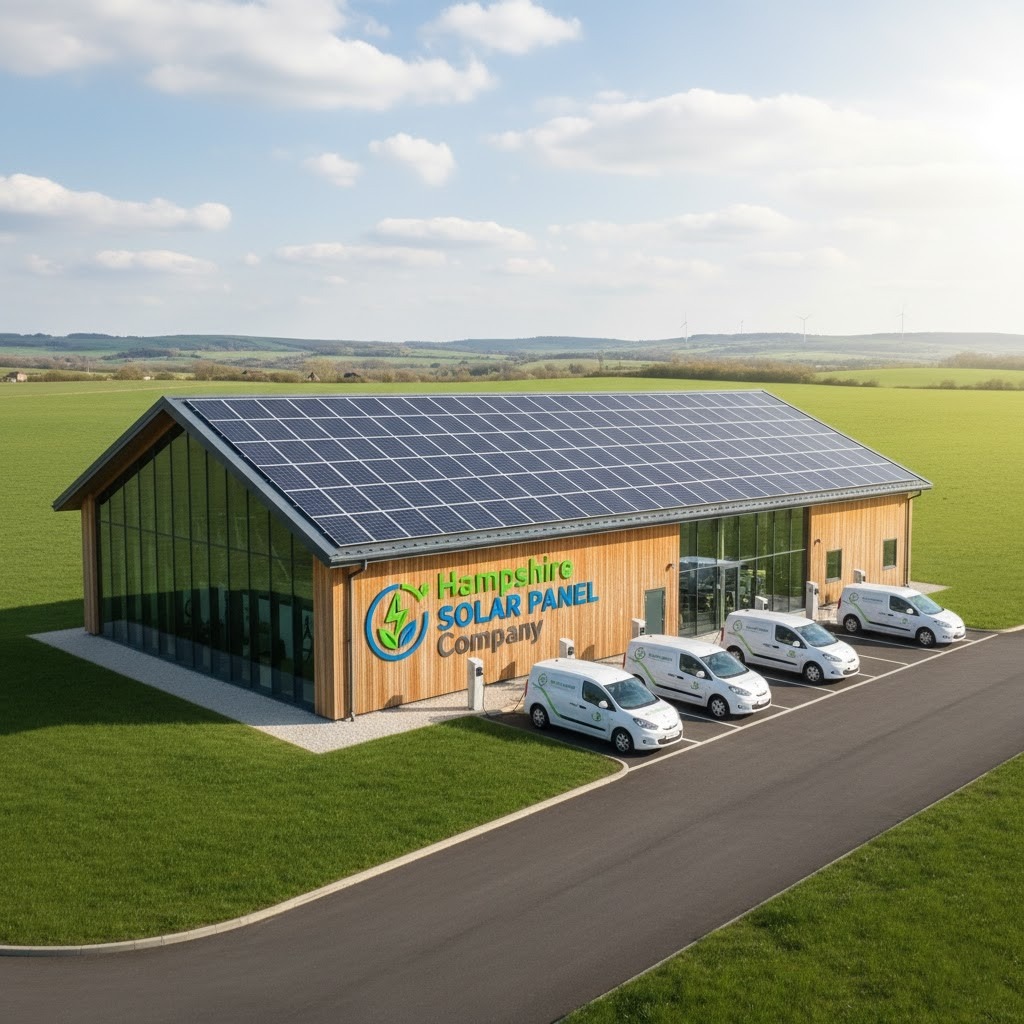Maharashtra, as one of India’s largest and most industrialized states, has placed strong emphasis on solar energy as part of its broader renewable-energy strategy. Through a combination of state policy, targeted schemes, and large-scale programs, the government is driving solar adoption across rooftops, agriculture, and utility-scale deployment.
Policy Targets & Strategic Vision:
• Maharashtra’s Integrated Non-Conventional Energy Generation Policy 2020 (effective till March 2025) set a target of ~13 GW of solar capacity by 2025.
• Under the agriculture-feeder program, the state has approved a major allocation of over Rs 10,000 crore for the “Solar Agriculture Feeder Scheme 2.0” to reach 16,000 MW of capacity by 2025.
• The state is also setting a roadmap for >30 GW of solar capacity by FY 2029-30, as part of its transition to a clean energy-dominant mix.
Key Provisions & Features:
🔹 Rooftop & Residential Solar
• A notable scheme: the Swayampurna Maharashtra Residential Roof‑Top (SMART) Solar Scheme (2025-27), which targets households — especially those consuming below 100 units/month (including BPL, SC/ST) — with substantial subsidies to install 1 kW rooftop systems.
• For example, A 1 kW system costing ~₹50,000 may require only ~₹2,500 from a BPL consumer after central and state subsidies under the scheme.
🔹 Agriculture / Feeder Solar
• The Mukhyamantri Saur Krushi Vahini Yojana (MSKVY) 2.0 focuses on solarising agricultural feeders, providing reliable daytime electricity to farmers, reducing diesel dependence, and improving grid efficiency.
• For example, Landowners lease low-yielding land for solar installations; the scheme spans multiple districts and targets ~5 GW of agri-solar rollout by September 2025.
🔹 Utility / Project Scale & Industry Integration
• The state is targeting large-scale solar park development and integration with storage/hybrid systems to meet emerging demands.
• Policy also reduces the minimum sanctioned load for commercial consumers to 100 kW (from 1 MW) and increases the net-metering cap for rooftop to 5 MW in some cases.
Incentives & Subsidies:
• Subsidies for households under the SMART scheme (state + central) for consumers with low consumption.
• Land lease incentives, stamp duty, and electricity duty concessions for developers of large solar / feeder projects.
• Special targeting of underdeveloped and remote areas for equitable solar access.
What It Means for Different Stakeholders:
• Homeowners / Residential Consumers: Chance to reduce electricity bills or even achieve near-zero bills in low-consumption households; improved access to rooftop solar with subsidies.
• Farmers & Agricultural Sector: Reliable daytime power via solar feeder schemes, reduced diesel usage, additional income via land leasing, and improved irrigation reliability.
• Businesses & Industries: Easier access to rooftop solar (100 kW+), potential for captive consumption, scope to integrate solar + storage for cost savings.
• Developers & Investors: Large targets and state backing make Maharashtra an attractive state for solar project development; program scale (e.g., 16 GW feeder scheme) presents big opportunities.
Challenges & Considerations:
• While targets are ambitious, implementation timelines remain tight — e.g., the agri-solar 5 GW by Sept 2025 target is formidable.
• Recent regulatory changes: The Maharashtra Electricity Regulatory Commission (MERC) FY 2025-26 tariff order modified banking, TOD slots, and grid support charges — affecting ROI for some solar PPAs.
• For rooftop solar, roof suitability, choice of vendors, clarity on net-metering, and maintenance remain important.
• Grid infrastructure, evacuation, and implementation efficiency will determine how quickly projects translate into real capacity.
The Road Ahead:
Maharashtra’s solar policy sets a path to a cleaner energy future, with strong emphasis on “everyday” consumers (homes + farmers) as much as large-scale industrial/utility developments. With the smart linking of rooftop, agriculture, and utility-scale solar, the state aims not just to increase installed capacity but to transform electricity supply, reduce subsidies, and strengthen rural energy access.




